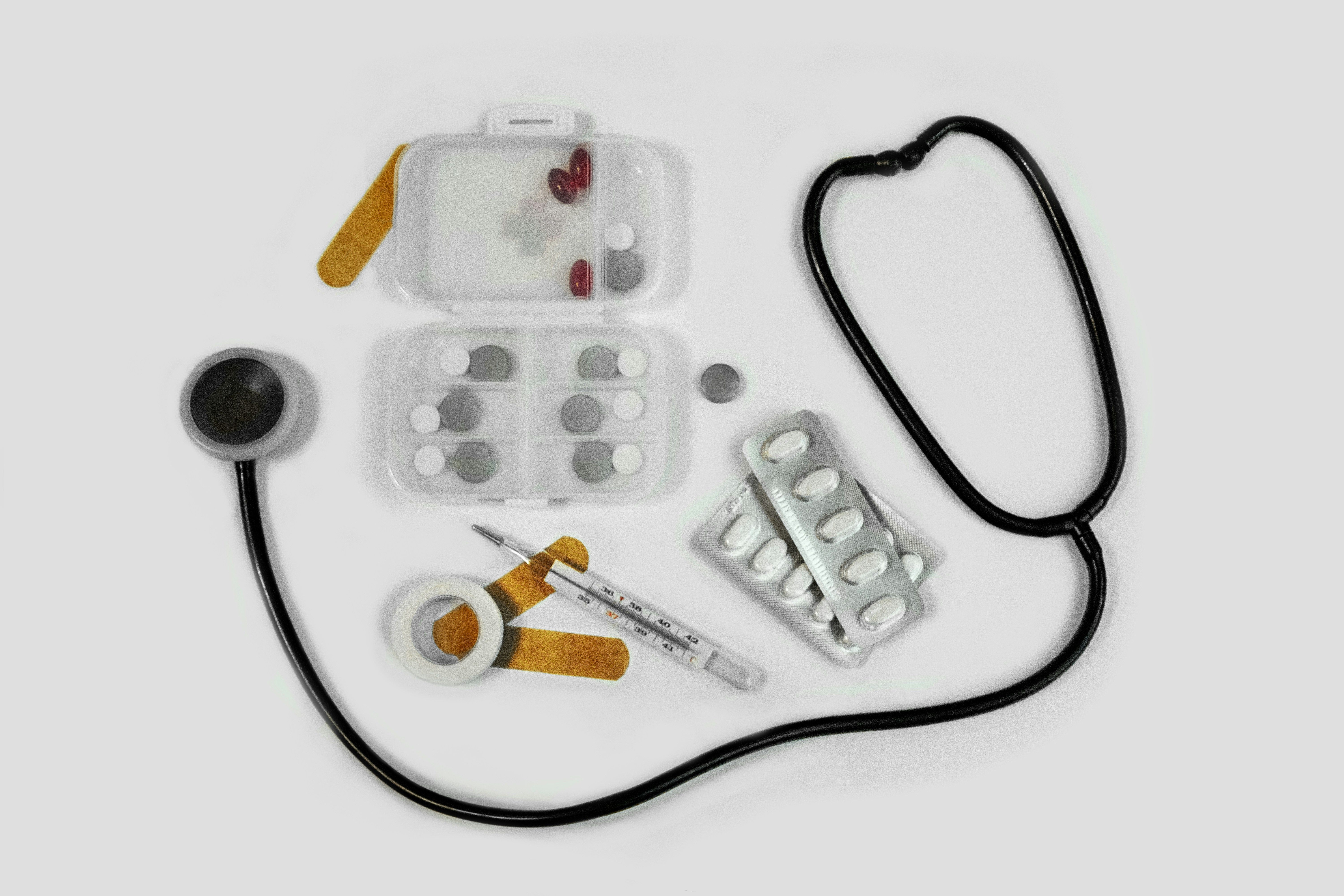Dealing with a gum infection? This article covers how to recognize symptoms, when to use antibiotics, and ways to prevent future infections. Understanding these key points can save you from pain and keep your mouth healthy.
Key Takeaways
- Gum infections, including gingivitis and periodontitis, require prompt treatment to prevent complications like tooth loss and overall health issues.
- Antibiotics such as amoxicillin and metronidazole are commonly prescribed for severe gum infections, but they should be used in conjunction with a dental procedure for effective treatment. Procedures such as root canals, tooth extractions, and draining abscesses are necessary steps to effectively resolve the infection and prevent its spread.
- Preventive measures like maintaining good oral hygiene, regular dental check-ups, and being aware of risk factors are essential in reducing the likelihood of gum infections.
Understanding Gum Infections and Bacterial Infections
Gum infections, also known as periodontal diseases, are serious conditions affecting the gums and surrounding tissues. Symptoms typically include swelling, pain, and sensitivity around the affected area. Bleeding gums can also be a significant sign of infection that should not be overlooked. If left untreated, these infections can extend to the bone structure supporting the teeth, leading to more severe issues such as periodontitis, and eventually resulting in potential tooth loss.
Tooth decay can lead to gum infections if not addressed.
Treating gum infections promptly not only relieves pain but also prevents further damage to teeth and gums. Early intervention avoids complications from untreated dental infections, which can spread and impact overall health. Recognizing signs and acting quickly is key to maintaining both oral and general health.
Knowing the symptoms and risks of gum infections allows for early treatment, preventing minor issues from escalating. This foundational knowledge prepares you to explore the specific types of gum infections and their causes.
Importance of Treating Gum Infections
Treating gum infections is crucial to prevent further damage to teeth and gums. If left untreated, gum infections can escalate into periodontitis, a severe form of gum disease that may result in tooth loss. Moreover, gum infections can cause discomfort, pain, and swelling, significantly affecting a person’s quality of life. Prompt treatment can help alleviate these symptoms and prevent more serious complications. It is essential to seek dental care as soon as possible if you notice signs of gum infection, such as bleeding gums, bad breath, or loose teeth. Early intervention not only preserves your oral health but also enhances your overall well-being.
Common Types of Gum Infections
There are two primary types of gum infections that you should be aware of: gingivitis and periodontitis. Gingivitis is the milder form, characterized by swollen, red gums that bleed easily, often accompanied by bad breath. If treated early with proper oral hygiene and professional care, gingivitis can be reversed without causing long-term damage.
Periodontitis, on the other hand, is a more severe form of gum disease that occurs when gingivitis is left untreated. This condition involves the inflammation and infection of the ligaments and bones that support your teeth, potentially leading to bone loss and tooth loss if not managed promptly. Symptoms of periodontitis include persistent bad breath, receding gums, and loose teeth.
Another condition to be mindful of is an abscessed tooth, which is a pocket of pus caused by a bacterial infection. This can be extremely painful and may present with a swollen, red appearance around the affected oral cavity infected tooth. Recognizing these conditions and understanding their symptoms can help you seek timely treatment, preventing further complications.
Causes and Risk Factors
Gum infections are often caused by the buildup of dental plaque, a sticky film of bacteria that forms on teeth. If dental plaque is not regularly cleaned away through brushing and flossing, it can harden into tartar, which is a significant contributor to gum disease. Tartar buildup can only be removed by a dentist, making regular dental check-ups essential.
Lifestyle choices also play a crucial role in the development of gum infections. Smoking is a major risk factor that can hinder the success of gum disease treatment and significantly increases the risk of developing gum disease. Additionally, certain health conditions, such as diabetes and AIDS, along with their treatments, can elevate the risk of gum disease. Hormonal fluctuations in women and genetic predisposition can also contribute to an individual’s likelihood of developing gum infections.
Recognizing these causes and risk factors helps in taking preventive measures, like maintaining good oral hygiene, avoiding tobacco, and managing health conditions. These actions reduce the risk of serious gum infections and promote overall health.
When to Use Antibiotics for Gum Infections
Antibiotics are often used for severe infections, advanced stages, or abscess formation. They are crucial when infections spread or to prevent post-procedure infections. Those with weakened immune systems are at higher risk, making antibiotics necessary.
However, antibiotics alone are not sufficient to treat tooth infections; they must be used in conjunction with dental procedures such as drainage or extractions to effectively eliminate the source of dental infection. Consulting a dentist is crucial to address the underlying causes of gum infections and to develop a proper treatment plan. If there are signs of an infection spreading, dentists will prescribe antibiotics or recommend necessary dental procedures.
Treating periodontitis may require a combination of antibiotics. In severe cases, clindamycin may be prescribed if other antibiotics fail. Knowing when and why antibiotics are used ensures adherence to the treatment plan and better outcomes.
How Antibiotics Work Against Bacterial Infections
Antibiotics are commonly prescribed to treat bacterial infections, including gum infections. They work by killing or inhibiting the growth of bacteria that cause the infection. Antibiotics can be administered orally or topically, depending on the severity of the infection. In the case of gum infections, antibiotics such as metronidazole, amoxicillin, and clindamycin are often prescribed. These antibiotics target the bacteria that cause the infection, helping to reduce inflammation and promote healing. However, it is essential to complete the full course of antibiotics as prescribed by your dentist to ensure the infection is fully cleared. This approach not only treats the current infection but also helps prevent the development of antibiotic-resistant bacteria.
Best Antibiotics for Treating Gum Infections: Metronidazole Tablets
Several antibiotics are commonly prescribed to treat gum infections, each with its specific uses and benefits. Penicillin-type antibiotics, such as amoxicillin, are widely used due to their effectiveness against various bacteria found in gum infections. Amoxicillin is often the first line of treatment for its broad-spectrum antibacterial properties.
Metronidazole tablets are another potent antibiotic that is particularly effective against anaerobic bacteria responsible for periodontal disease. It is usually prescribed in combination with other antibiotics to enhance its effectiveness, including metronidazole treatment. Clindamycin is often used for severe gum infections. This is especially true when other antibiotics do not provide a response. This antibiotic is known for its ability to tackle resistant bacterial strains.
Knowing the different antibiotics and their uses highlights the tailored approach for treating gum infections. Always follow your dentist’s or healthcare provider’s instructions for antibiotic treatment.
Metronidazole Tablets for Gum Infections
Metronidazole tablets are a type of antibiotic commonly used to treat gum infections. They work by killing anaerobic bacteria, which are often associated with periodontal disease. Metronidazole tablets are usually prescribed for 3-5 days, depending on the severity of the infection. It is essential to take the tablets exactly as prescribed by your dentist and to complete the full course of treatment. Metronidazole tablets can cause side effects such as stomach pain, hot flushes, and nausea, but these are usually mild and temporary. If you experience any severe side effects, you should consult your dentist immediately. Understanding the effects of metronidazole tablets and adhering to the prescribed regimen ensures effective treatment and quicker recovery.
How to Take Antibiotics for Gum Infections
Most antibiotics for gum infections are taken oral antibioticly, usually in tablet or capsule form, with a full glass of water. It is essential to adhere strictly to the prescribed dosage and duration for antibiotic treatment to ensure its effectiveness. The instructions provided with antibiotics will specify the frequency of doses and whether they should be taken with food.
Consult your pharmacist or healthcare provider with any questions about your antibiotic regimen, including prescribing antibiotics. Completing the full course is crucial, even if symptoms improve, to avoid complications and fully eradicate the infection. Adhering to instructions is vital for successful treatment.
Side Effects of Antibiotics
Like all medications, antibiotics can come with side effects, including the effects of metronidazole tablets. Common side effects include diarrhea and nausea, which typically resolve after completing the treatment. Gastrointestinal issues such as stomach pain and nausea are also common. Some individuals may experience hot flushes as a reaction to antibiotic treatment.
After: Antibiotics can come with side effects, including:
- Diarrhea
- Nausea
- Gastrointestinal issues such as stomach discomfort
- Hot flushes
These side effects typically resolve after completing the treatment.
Consult your healthcare provider if you experience adverse effects while taking antibiotics. They can offer guidance on managing side effects or adjusting your treatment plan if needed.
Awareness of potential side effects allows for proactive management, ensuring effective treatment.
Natural Remedies and Home Care
While antibiotics are often necessary for treating severe gum infections, natural remedies and proper home care can play a supportive role. Warm saltwater rinses can help alleviate symptoms of gum infections by reducing swelling and cleaning the affected area. Garlic, known for its antibacterial properties, can be applied to the infected area to offer pain relief and fight bacterial infections.
Coconut oil is another natural remedy believed to have antibacterial properties that may help manage symptoms of tooth infections. Essential oils like clove and thyme oil can be applied for their therapeutic benefits. Additionally, hydrogen peroxide can serve as an effective mouth rinse to help prevent infections.
Combining natural remedies with proper home care can enhance the effectiveness of antibiotic treatment for gum infections.
Prevention Tips for Avoiding Gum Infections
Maintaining good oral hygiene is key to preventing gum infections. Schedule dental check-ups every six months for early detection. Brush twice daily and floss to remove plaque and food particles, and avoid tobacco to lower infection risk.
Regular follow-ups with dental cleanings and proper oral hygiene practices can minimize the need for additional deep cleanings. By adopting these preventive measures, you can significantly reduce your risk of gum infections and maintain healthier gums.
Importance of Dental Procedures
Dental procedures such as deep cleaning, root canals, or tooth extractions are crucial in managing gum infections effectively. These interventions are designed to remove the source of infection and often eliminate the need for antibiotics. Incorporating dental procedures into your oral care routine can significantly reduce the risk of recurrent gum infections.
Recognizing the importance of these procedures underscores the need for professional dental practice in managing and preventing gum infections. Regular dentist visits and timely interventions ensure healthy, infection-free gums.
Consult with a Dentist for the Best Treatment Plan
Consulting with a dentist is crucial when it comes to treating gum infections. Dentists can provide personalized care tailored to your specific needs and prescribe antibiotics if necessary. They can also offer alternative treatments such as deep cleaning, scaling, root planing, or even surgical intervention in severe cases. Additionally, dentists can provide guidance on how to prevent gum infections in the future by maintaining good oral hygiene practices. Regular dental check-ups can help identify gum infections early on, and prompt treatment can prevent more serious complications. Don’t hesitate to consult with a dentist if you notice signs of gum infection or have concerns about your oral health. A professional dental practice ensures that you receive the best possible care for maintaining a healthy smile.
Summary
Gum infections are serious conditions that require prompt attention and treatment. By understanding the types of gum infections, their causes, and the best treatment options, you can take proactive steps to maintain your oral health. Antibiotics play a crucial role in treating severe infections, but they should be used in conjunction with dental procedures for the best results.
Prevention is always better than cure. Maintaining good oral hygiene, regular dental check-ups, and avoiding risk factors like smoking can significantly reduce your risk of gum infections. Stay informed, follow your dentist’s advice, and take care of your gums to enjoy a healthy, confident smile.
Frequently Asked Questions
What are the common symptoms of gum infections and abscessed tooth?
Common symptoms of gum infections include swelling, pain, sensitivity, bleeding gums, persistent bad breath, and teeth sensitivity. It is important to seek dental care if you experience these signs.
When should antibiotics be used for gum infections?
Antibiotics should be used for gum infections primarily in cases of severe infections, advanced gum disease, or the presence of an abscess, often alongside dental procedures for optimal effectiveness.
What are some natural remedies for gum infections?
Warm saltwater rinses, garlic, coconut oil, and essential oils such as clove and thyme are effective natural remedies for gum infections, as they can alleviate symptoms and complement traditional treatments.
How can I prevent gum infections?
To effectively prevent gum infections, it is essential to maintain good oral hygiene by brushing at least twice daily, flossing each day, scheduling regular dental check-ups, and avoiding tobacco products. Prioritizing these practices will significantly reduce your risk of developing gum infections.
What are the side effects of taking antibiotics for gum infections?
Taking antibiotics for gum infections can lead to side effects such as diarrhea, nausea, and gastrointestinal issues. It is important to consult your healthcare provider if you experience any adverse effects.




